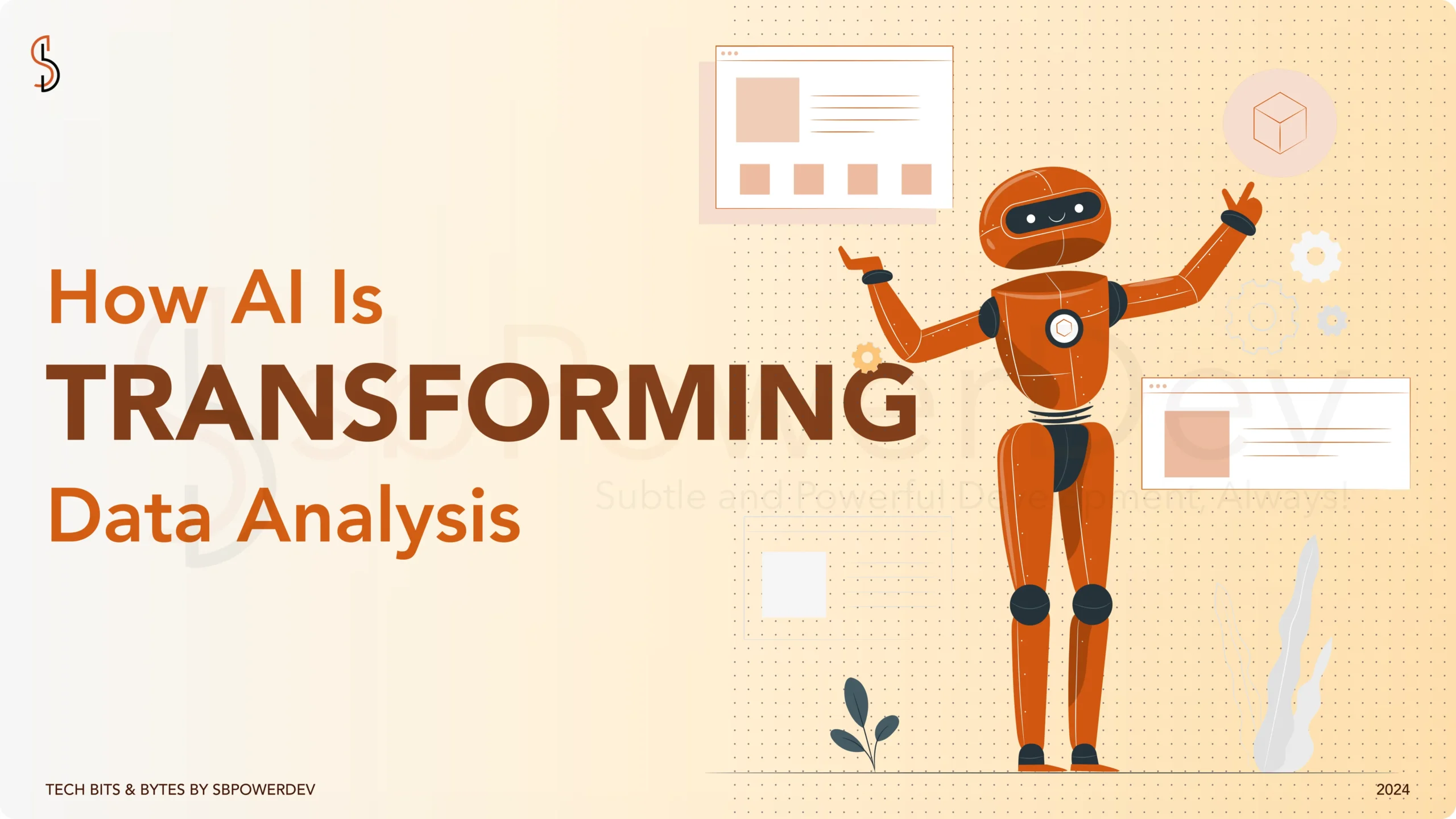Introduction
The demand for cutting-edge tools and technologies has increased in the dynamic field of data analysis as both the volume and complexity of data continue to rise. Despite their effectiveness, traditional data analysis techniques frequently find it difficult to keep up with the volume of information that is now available. Let me introduce you to augmented analytics, a ground-breaking method that uses artificial intelligence (AI) to completely change how we analyze and draw conclusions from data.
Understanding the Definition and Elements of Augmented Analytics
Augmented analytics is fundamentally about incorporating AI and machine learning into the data analysis workflow. This convergence of technology ushers in a new era in which analytics tools are increasingly automated, user-friendly, and able to manage intricate jobs. Natural language processing (NLP), automation, and machine learning techniques are the mainstays of augmented analytics.
Machine learning algorithms are essential for recognizing trends, forming hypotheses, and offering practical insights. However, NLP makes it possible for the system to understand and react to human language, which facilitates interactions with and value extraction from data for non-technical users. Automation reduces the time and effort needed for data integration, cleansing, and preparation by streamlining repetitive activities.
Benefits of Augmented Analytics
Faster Decision-Making:
One of the primary advantages of augmented analytics is its ability to facilitate faster decision-making. By automating time-consuming tasks, organizations can obtain real-time insights, enabling them to respond promptly to changing market trends and make informed decisions.
Consider a scenario where a retail business wants to analyze sales data to identify the most profitable products. With augmented analytics, this process is expedited, allowing the business to adjust inventory and marketing strategies in near real-time. This acceleration in decision-making can be a game-changer in industries where agility is a key competitive advantage.
Democratizing Data Analysis:
Traditionally, data analysis has been the domain of data scientists and analysts with specialized skills. Augmented analytics aims to democratize this process, making it accessible to individuals across various roles within an organization. By incorporating user-friendly interfaces and natural language interfaces, augmented analytics tools empower business users to explore and interpret data without extensive technical training.
This democratization of data analysis promotes a more inclusive approach to decision-making. Teams can collaborate more effectively, as insights are not confined to a select group of specialists. This shift reduces the bottleneck often associated with traditional analytics, where a limited number of experts control the flow of insights.
Improved Accuracy and Precision:
Machine learning algorithms, a cornerstone of augmented analytics, bring a new level of accuracy and precision to data analysis. These algorithms can analyze vast datasets, identify patterns, and make predictions with a level of accuracy that surpasses traditional methods.
Consider a scenario in healthcare, where predictive analytics powered by machine learning can assist in identifying potential outbreaks of diseases. By analyzing various data sources, including patient records, environmental factors, and historical data, the system can provide early warnings and recommend preventive measures. The increased accuracy and precision offered by augmented analytics are particularly valuable in industries were making decisions based on data accuracy is critical.
The Role of Artificial Intelligence in Augmented Analytics:
Machine Learning Algorithms:
At the heart of augmented analytics lies the utilization of machine learning algorithms. These algorithms enable systems to learn from data patterns, identify correlations, and make predictions, ultimately augmenting human decision-making. Whether it’s predicting market trends, customer behavior, or operational inefficiencies, machine learning algorithms play a pivotal role in elevating the analytical capabilities of organizations.
Natural Language Processing (NLP):
One of the most significant advancements in augmented analytics is the integration of natural language processing. This enables users to interact with data using natural language queries, making it more accessible to individuals with varying levels of technical expertise. NLP bridges the gap between data and decision-makers, fostering a more democratized approach to analytics.
Automated Data Preparation:
Streamlining Data Cleaning and Transformation:
Data preparation has traditionally been a time-consuming and labor-intensive task in the analytics process. Augmented analytics introduces automation to data cleaning and transformation, allowing organizations to expedite the process of getting data ready for analysis. This not only saves time but also minimizes the risk of human errors, ensuring the accuracy and reliability of analytical insights.
Empowering Citizen Data Scientists:
The automation of data preparation empowers individuals known as citizen data scientists, who may lack a formal background in data science but possess domain knowledge. Augmented analytics tools equipped with automated data preparation capabilities enable these individuals to explore and analyze data independently, fostering a culture of data-driven decision-making across the organization.
Real-World Applications
Business Intelligence Enhancement:
Augmented analytics is making significant strides in enhancing traditional business intelligence (BI) tools. BI platforms, which traditionally required a certain level of technical expertise, are becoming more user-friendly and intuitive. These platforms leverage AI to assist users in querying data, creating visualizations, and interpreting results.
Consider a sales manager exploring quarterly performance data. With augmented analytics, the system can proactively suggest relevant metrics, trends, and visualizations based on the user’s context. This proactive assistance not only accelerates the analysis process but also enables users to uncover insights they might have overlooked.
Customer Insights and Personalization:
In the era of customer-centric business strategies, understanding and personalizing customer experiences have become paramount. Augmented analytics plays a crucial role in this domain by providing deeper insights into customer behaviour and preferences.
Imagine an e-commerce platform using augmented analytics to analyse customer interactions, purchase histories, and social media activity. The system can identify patterns and trends, enabling the platform to personalize product recommendations, marketing messages, and promotional offers. This level of personalization goes beyond traditional segmentation, creating a more tailored and engaging experience for each customer.
Risk Management and Fraud Detection:
The financial sector, among others, has embraced augmented analytics for risk management and fraud detection. Traditional methods of risk assessment often involve extensive manual processes and static models. Augmented analytics introduces dynamic and adaptive models that continuously learn from new data, improving their ability to identify potential risks.
In the context of fraud detection, machine learning algorithms can analyse transaction patterns and detect anomalies indicative of fraudulent activity. The system can adapt to evolving tactics used by fraudsters, providing a more robust defense against financial crimes. The real-time nature of augmented analytics is particularly advantageous in situations where quick detection and response are essential.
Challenges and Considerations
Data Privacy and Ethics:
As organizations embrace augmented analytics, concerns regarding data privacy and ethics come to the forefront. The increased reliance on AI and machine learning raises questions about how personal and sensitive data is handled. Bias in algorithms, unintentional or otherwise, can lead to unfair and discriminatory outcomes.
Addressing these concerns requires a combination of ethical considerations, regulatory compliance, and technological safeguards. Organizations must prioritize transparency in their analytics processes, communicate openly about data usage, and implement measures to mitigate bias in algorithms.
Integration Challenges:
While the benefits of augmented analytics are evident, integrating these technologies into existing workflows and systems can present challenges. Legacy systems may not be designed to accommodate the advanced capabilities of augmented analytics tools, leading to compatibility issues. Additionally, organizations may face resistance from users accustomed to traditional methods.
Successfully overcoming these challenges requires a strategic approach to integration. This involves assessing the existing infrastructure, providing adequate training for users, and gradually phasing in augmented analytics capabilities. A well-planned integration strategy ensures a smoother transition and maximizes the benefits of these transformative technologies.
Conclusion
In summary, augmented analytics represents a significant evolution in the field of data analysis by combining the strengths of artificial intelligence with human expertise. The goal is to empower organizations to derive more meaningful insights from their data, fostering a data-driven culture and enabling better decision-making across all levels of an organization. Also, sbPowerDev, offers data analytics service where you will get access to comprehensive set of tools, technologies, and processes designed to analyse, interpret, and derive meaningful insights from large sets of data.
Stay tuned for more.















